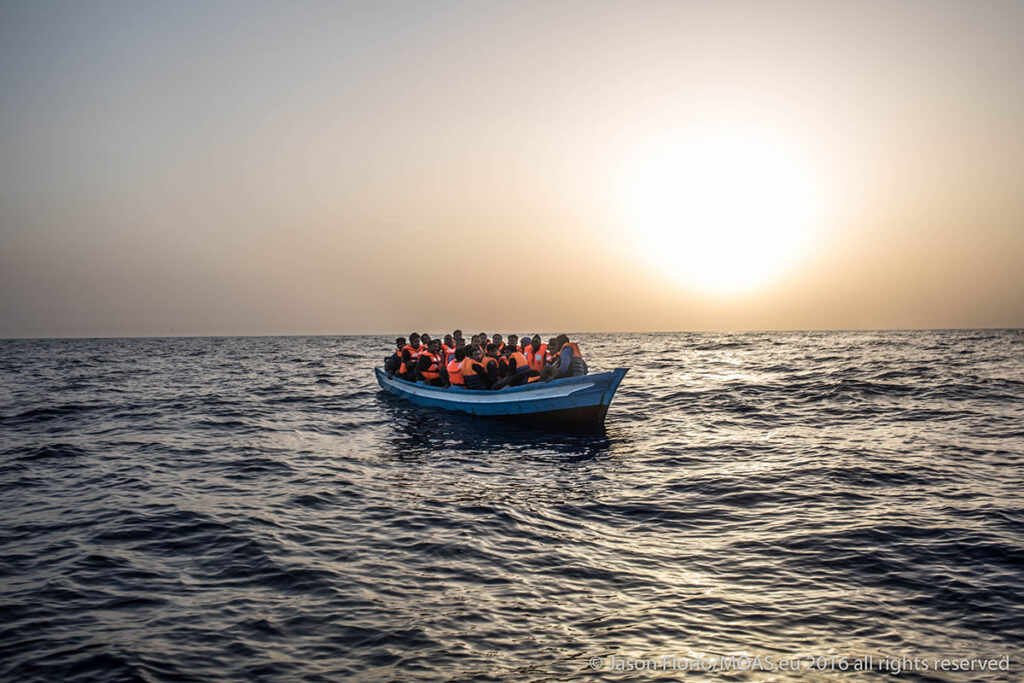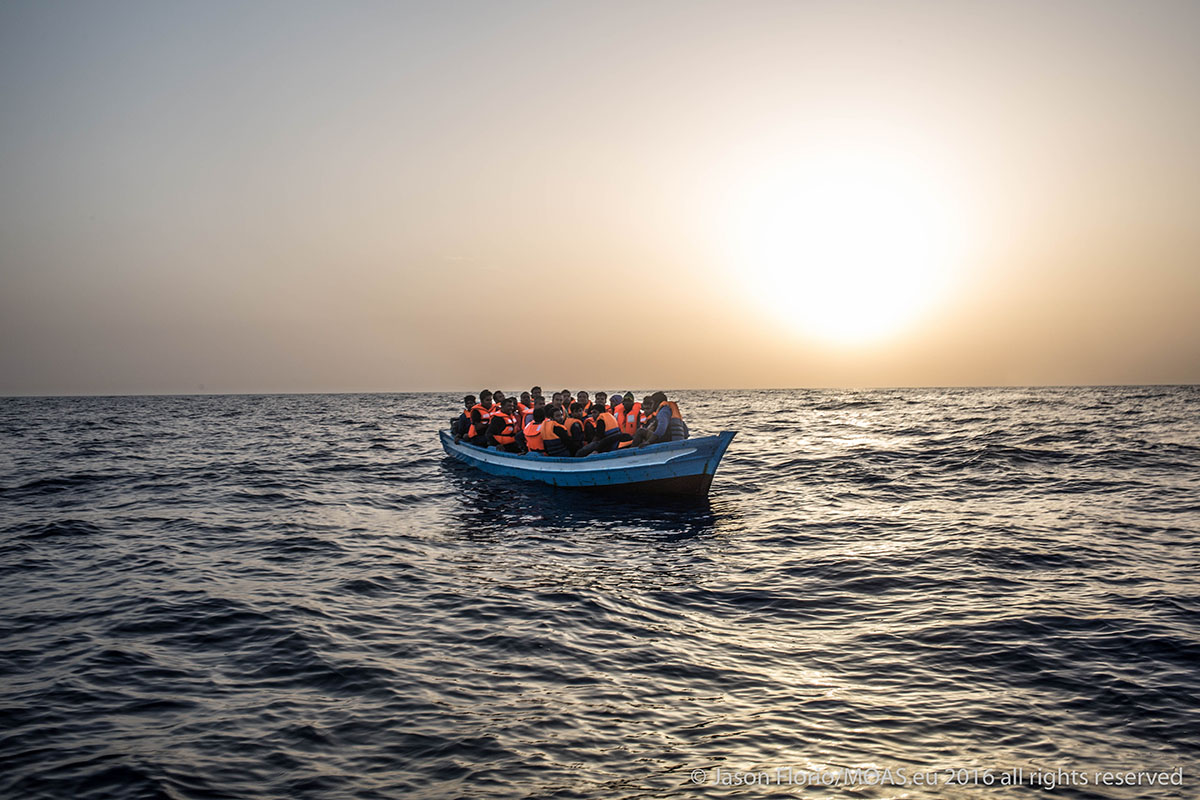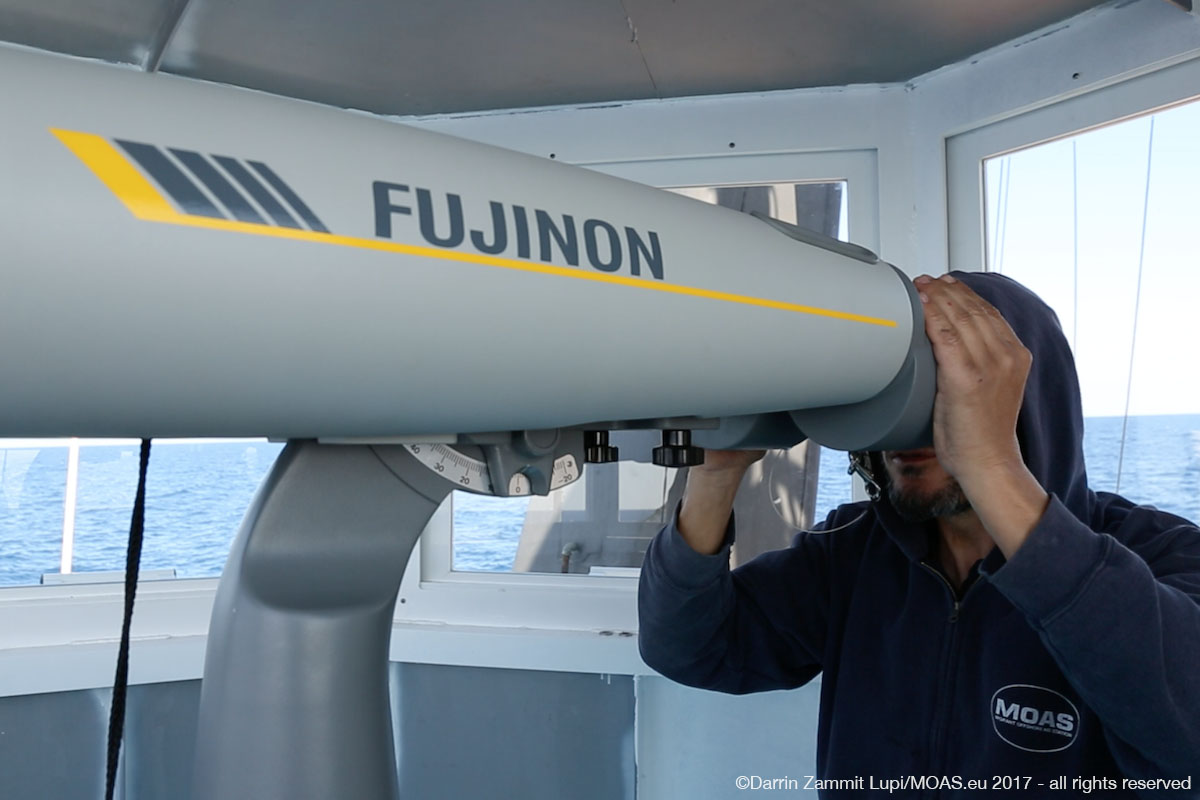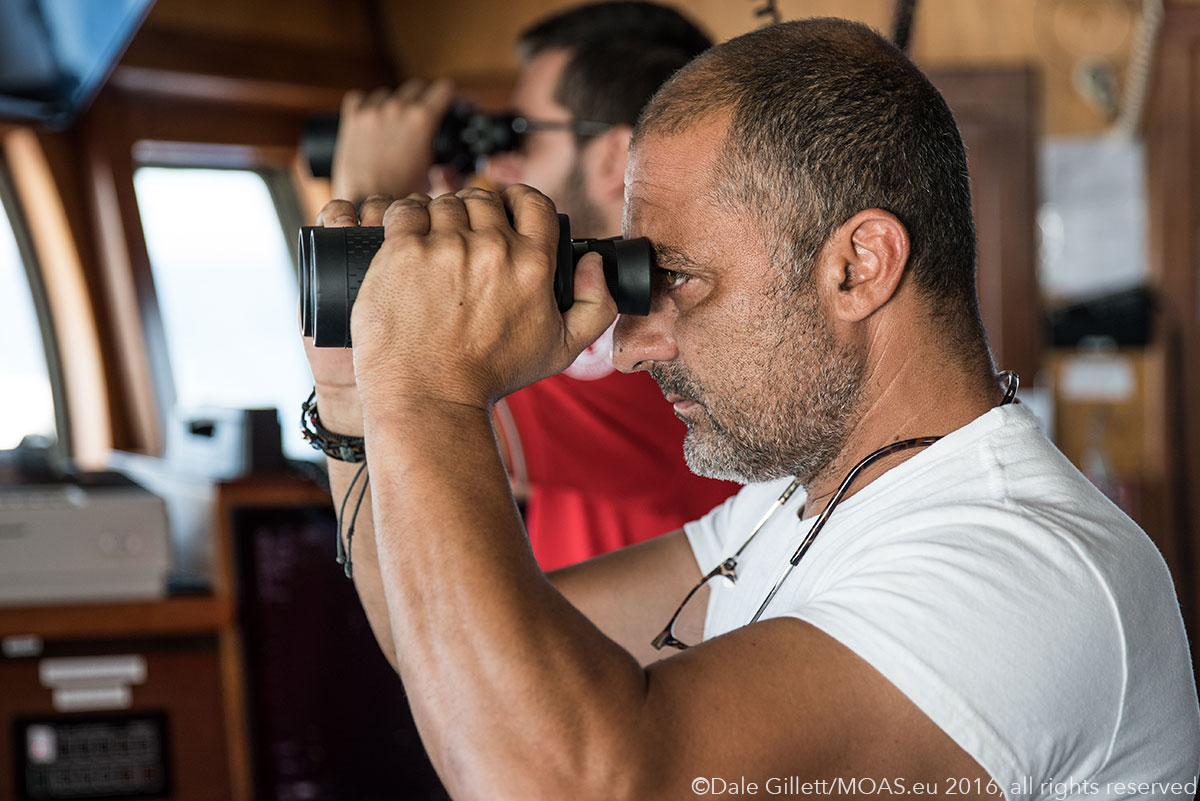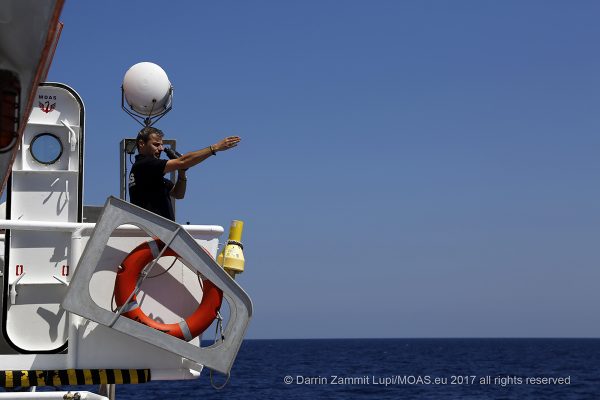Our professional and specialist crew is an important part of what makes MOAS the field-leading organization it has become. Throughout the month of May, we will be sharing with you how they undertake rescue operations and the challenges that they face during our missions. Today, we will explore our crew’s experience of the first part of a search and rescue operation – the sighting.
According to international maritime law, “all vessels are required to answer distress calls from nearby boats and to offer help to people where possible” (UNHCR). While our vessel and its crew are in the Search and Rescue (SAR) zone, we are always ready to help those in distress.
Once we have arrived in the SAR zone in the international waters north of Libya, we begin taking shifts to keep watch on the horizon day and night, searching for rubber dinghies or wooden boats, or items floating in the water that may indicate there is trouble nearby.
While on watch from the boat we have several different pieces of equipment at our disposal. During the days multiple pairs of regular binoculars can be used at a time for watches from the bridge, the bow or any other part of the ship as they are portable and easy to share. The newest addition to our kit includes powerful new binoculars fixed to a tower that allows us to see potential targets in much more detail, and also has night vision to allow us to watch at night. Finally, on the bridge, the team keeps track of any potential targets that come up on the radar system, often the easiest method for keeping watch at night.
This year, for the first time, MOAS is also going out on patrol with a fixed wing light manned aircraft. This new capability greatly increases our reach as it can fly in a wide area around the Phoenix and beyond, beaming information to the Maritime Rescue Coordination Center (MRCC) in Rome, the Phoenix and our headquarters in Malta. The aircraft is based in Malta and flies regularly from the island – it can confirm suspected vessels in distress flagged up by MOAS, the MRCC or other assets in the area.
Once a vessel in distress has been identified and confirmed referred to us from Rome, what follows is a coordination exercise led by the MRCC which may include several assets, be they state, NGO or merchant. It is the MRCC who decides who undertakes a rescue and how we should proceed.
Once tasked with a rescue by the MRCC we can intervene and engage. In a situation where there is immediate and imminent risk to life, we begin rescues while informing MRCC about our activities. Where there is more than one boat in danger in a particular area, or if a vessel is in a bad condition – for instance is taking on water or has people overboard – MRCC may coordinate more than one rescue vessel at a time on a particular rescue.
It is not unusual for vessels to depart from the Libyan coast in waves, sometimes up to 30 or 40 vessels at a time, making multiple and complex coordinated rescues a reality for the MRCC and those they coordinate. If the MRCC is overwhelmed by incidents, it may appoint an on-scene coordinator in the form of the Phoenix or another SAR vessel to coordinate the rescue in its place and keep it informed.
The vessels that we rescue are often in a bad condition and it is crucial for us to get to them and begin our rescue operations as quickly as possible, which is why efficient and timely communication between MRCC and the MOAS crew is an essential part of our operations.
“People are dying by the minute… if you don’t reach them at the right minute, they’re done.” (Marco, SAR crew member).
Next week, we will explore how we undertake this most complex part of our mission: the rescue.
Please sign up to our newsletter at the bottom of this page for all the MOAS news and updates and by giving whatever you can to help us save lives at sea.
This project has been funded with support from the European Commission. This publication reflects the views only of the author, and the Commission cannot be held responsible for any use which may be made of the information contained

